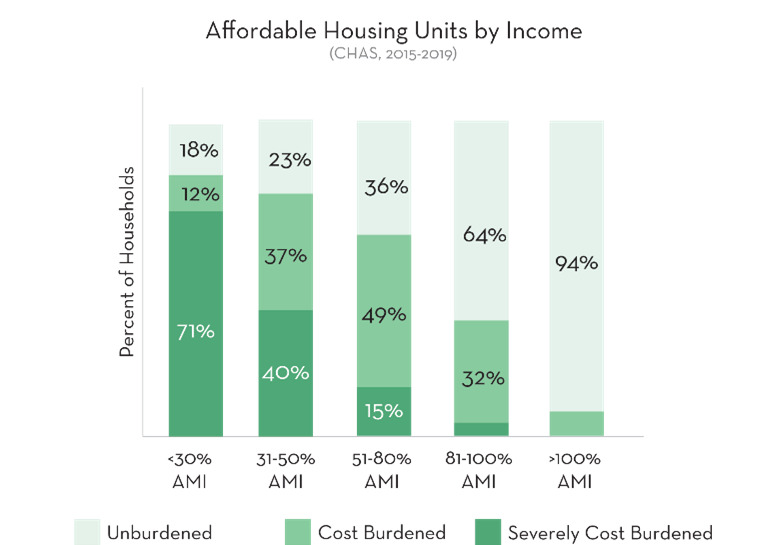Important Housing Topics for our Kirkland 2044 Update
The following challenges will need to be addressed with the update to the Housing Element. Many of these challenges are identified in the Kirkland’s Housing Strategy Plan but continue to persist. Goal and policies of the Housing Element also need to be reevaluated to align with best practices in equitable and inclusive planning.
Changing Housing Need
Kirkland has established itself as a vibrant and desirable city to live, work, and play. Our community is also part of a rapidly growing regional job center bringing more people into our city to find work. Although Kirkland is an immensely livable place, this growth has contributed to escalating housing costs and increased commutes for community members who can no longer afford to live in Kirkland. At the same time our population has become more diverse, older, and our household sizes have decreased.
Affordability
The issue of housing affordability reaches most people in a community, since the quality of life in a city is tied, to a large extent, to the ability of its residents and local employees to find the kind of housing they desire at a price they can afford. Kirkland will need to address its current and future housing affordability issues to meet the needs of all income levels for our city to continue to thrive.
The following chart shows the number of Kirkland households that are cost burdened. When households spend more than 30% of their income on housing, they are cost burdened and struggle to afford other necessities. Households are severely cost burdened when they pay more than 50% of their income on housing.

Housing Inequity
Our housing landscape reflects market forces, proactive planning for diverse housing, cultural preferences, and a history of discriminatory practices. In the past, racist housing policies and practices explicitly denied homeownership to people of color and limited where they could live. Kirkland’s current housing landscape has some vestiges of these past practices. It is vital that Kirkland address this legacy of inequity by crafting policies to reverse its outcomes and to create a more equitable future. The following chart shows the number of Kirkland households that are cost burdened by race and ethnicity.
